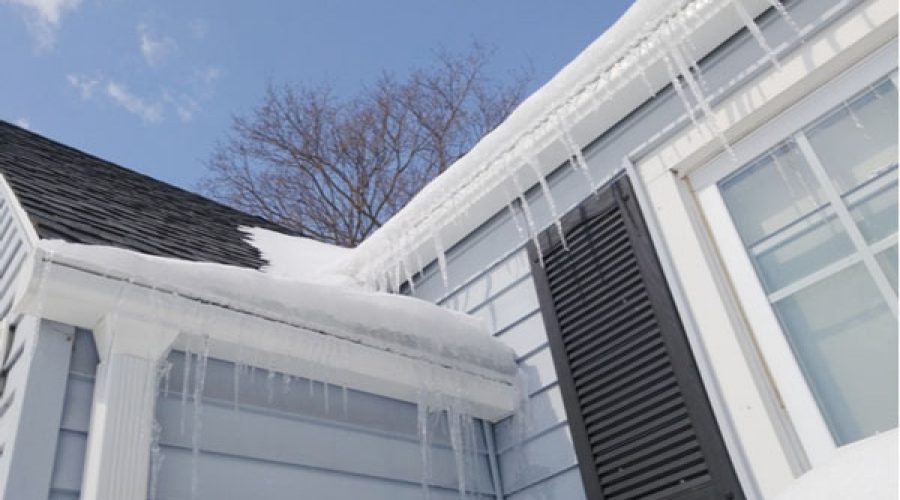After a few months coasting on mild temperatures and little precipitation, winter has reared its ugly head. And as if that weren’t enough, preventing ice dams, is just the “ice-”ing on the cake! Freezing and thawing temps create a perfect recipe for ice dams. Knowing what an ice dam is, how to identify them, and how to remove them can help protect your roof and home for many winters to come.
What are Ice Dams?
Ice dams form when water from melting snow turns to ice at the roofline. The ice that develops may grow large enough to prevent water from melting snow to drain off the roof. The water can then back up underneath the shingles of the roof and make its way into your home.
How to Identify Ice Dams
As stated above, typically ice dams form at the edge of your roof. But depending on the slope your roof, ice dams can form in other locations. There are two identifiable signs of ice dams:
- Icicles can be the start of an ice dam. However, if icicles are confined to the gutters, then it is not likely water is trapped behind them. Nonetheless, it is important to safely remove icicles since they can fall and cause damage to property or persons.
- Check for water stains in your attic or along the ceiling of your house. Water stains or moisture is a sure sign that an ice dam has formed, and water has penetrated the roof.
How to remove an Ice Dam
Once you know you have an ice day, it is critical to remove it to avoid further damage to your home. Calling a roofing professional is your first line of defense to taking care of the problem. However, there are some things that you can do on your own if you have located the ice dam.
- Using a rake, remove snow 3-4 feet from the edge of your roof.
- Use a calcium chloride ice melt product.
- Fill a nylon stocking with the calcium chloride product.
- Carefully place the calcium chloride filled nylon stocking vertically across the ice dam so it can melt a pathway through the ice.
- Place a protective covering on any shrubbery, etc. below the ice dam so the sodium chloride water doesn’t drip onto the plant life and damage it.
Preventing Ice Dams
Luckily, there are some things you can do to actually prevent ice dams from forming. Assuring proper ventilation, insulation, and drainage are three of the most important components of preventing ice dams.
- Keep snow from accumulating on the lower 3-6 feet of your roof.
- Make sure gutters are clear of leaves and debris.
- Inspect and seal all places air could escape from the interior of your house, for example, exhaust fans, attic hatches, light fixtures.
- Have your roof and attic inspected for proper ventilation and insulation.
- Look for signs of moisture like mildew smell, rust spots, or rusty nails. This means there is poor ventilation.
- Make sure your soffit vents are free from blockage and insulation is secure.
Early detection and prevention of ice dams is the best way to keep your roof healthy through the winter months. The professionals at Pro-Home Services are experts at helping homeowners deal with those “darn” ice dams. We help owners get their houses winter ready and also offer gutter cleaning, roof inspection, and brand new windows and doors. At Pro-Homes Services we do our best to make your next winter worry free for your home. Give us a call today! (630)-790-0800.

